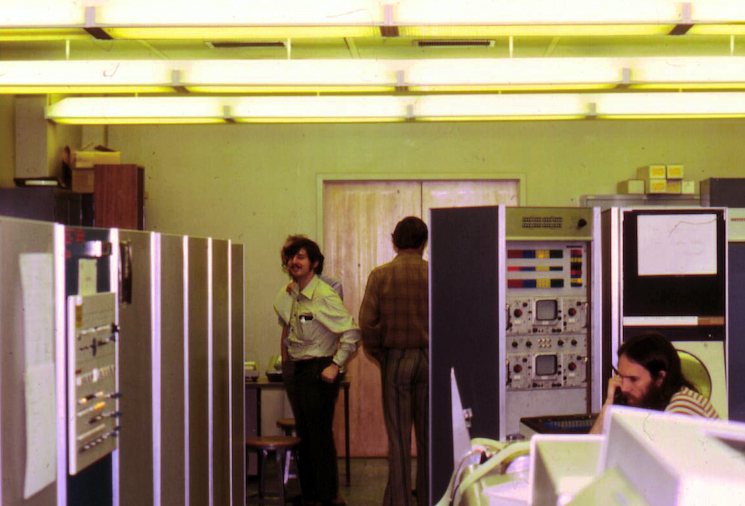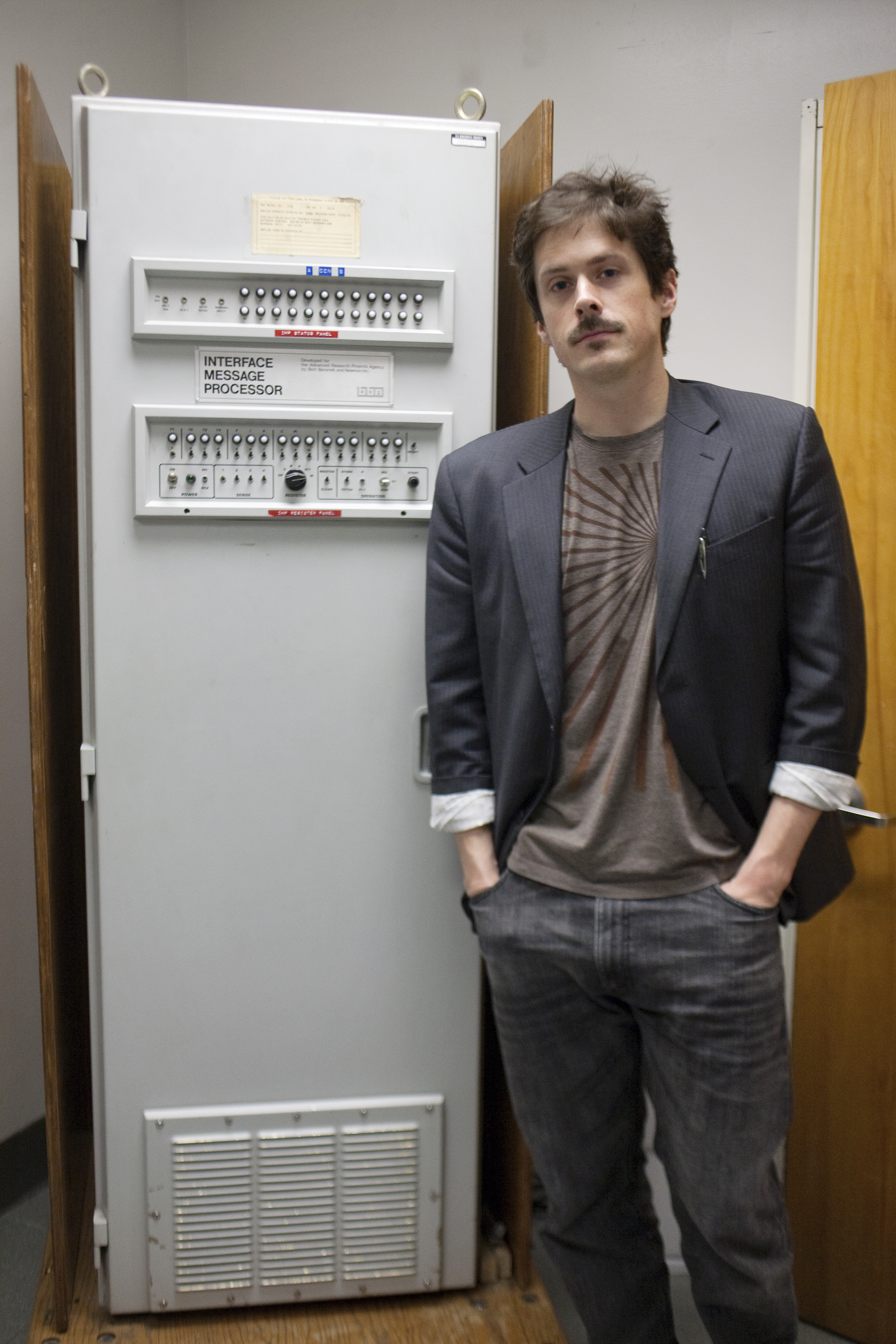
The UCLA Network Measurement Center was the home of the first ARPANET node in the 1970s.
Credit: The Kleinrock Internet Heritage Site

Boelter Hall 3420 is the site of the first Internet message ever, which was sent with an Interface Message Processor to the Stanford Research Institute on Oct. 29, 1969.
When Brad Fidler started investigating the origins of the Internet at UCLA, there was no consensus on who created the technology and where it began.
What is now known as the Internet first developed from the ARPANET, a rudimentary computer network commissioned by the U.S. Department of Defense.
“I knew that the first ARPANET node was at UCLA,” said Fidler, a history doctoral candidate. “Some people thought it was in North Campus, some in different engineering buildings.”
Fidler eventually narrowed the possible location down to a hallway and, through historical photos and researchers’ firsthand memories, determined that the first Internet message was sent from Boelter Hall 3420 and delivered to Stanford Research Institute on Oct. 29, 1969.
The technology was designed and tested by the UCLA Network Measurement Center, a project to study the first computer networks.
“I expected there to be some kind of indicator. Anything else at all, except an undergraduate lab,” Fidler said. “But that’s all there was ““ an undergraduate classroom sitting on the site of the first Internet connection.”
He found what most people would think of as the first modem, a packet-switching router, sitting in an office in one of the engineering buildings.
Fidler thought it would be a shame to not do something with it and took it upon himself to turn the room into a proper heritage site, which will be called the Kleinrock Internet Heritage Site and Archive.
“All these technologies are going to impact and revolutionize society ““ probably as much as the Industrial Revolution did,” he said. “So that’s why we think it’s useful and relevant and important to educate people.”
Leonard Kleinrock, a computer science professor at UCLA, played a crucial role in developing the packet-switching technology that later became the Internet. He has also helped Fidler reconstruct the original site and create an archive where the original material will be preserved and made accessible to future historians.
“There are people interested in the history of computing, but not many interested in the history of the Internet, and one of the major reasons is that there isn’t enough archival source material,” Kleinrock said.
When Fidler approached Dean of Engineering Vijay Dhir to reclaim Boelter 3420, Dhir immediately agreed that it would be an excellent idea.
“We are squeezed for space, but we recognize the importance of this project,” Dhir said.
A wall has been built to divide the room, and half of it will be transformed from an undergraduate lab back to its original state.
Fidler first planned to open the site as a reading room and display the Interface Message Processor ““ the main piece of hardware that allowed the first Internet connection ““ in a corner, but then realized it would be most interesting to recreate the archive in the style and form that the site was in 1969, when that first message happened.
To accurately reconstruct the site, he contacted alumni to ask for their recollections of the research setting. He also obtained historical photos, research papers, notes and original furniture that UCLA still stores from the 1960s.
But the relevance of creating an archive has still not been recognized, Fidler said.
The Interface Message Processor was almost thrown out, as the department was going to dispose of it once the Network Measurement Center experiment was done, Fidler said. Luckily, Kleinrock saw the innovation and potential importance of the project and stored it in his office.
“I tried giving it to the Smithsonian back in 1984 but they weren’t interested.” Kleinrock said. “Then they asked for it later, but they would not guarantee that it would actually be displayed rather than just put it in storage.”
So Kleinrock kept it, thinking that UCLA was a more appropriate place for it.
“At other schools, they make a big deal of relevant innovations, but that doesn’t seem to be as valued at UCLA,” he said.
He said the contents of the first messages sent over the phone, over the telegraph and even from the moon are widely known, but not the first message sent over the Internet.
“Not only that, but until recently nobody had even asked the question of what that first message was,” Kleinrock said.
